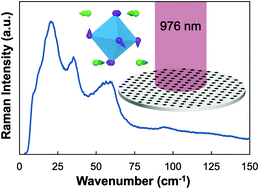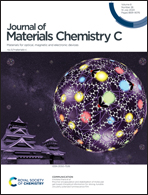Probing lattice vibrations of stabilized CsPbI3 polymorphs via low-frequency Raman spectroscopy†
Abstract
Understanding electron–phonon interactions in metal-halide perovskites (MHPs) is critical for improving their performance in optoelectronic devices. Probing lattice vibrations with conventional spectroscopic methods, however, is challenging due to the sensitivity of MHPs to laser light, humidity, and temperature changes. Here we report low-frequency Raman spectra of the δ and γ phases, as well as mixed ion derivatives, of CsPbI3. These spectra were obtained by combining below-bandgap low-frequency Raman measurements using a 976 nm laser and nanoconfinement of crystals within inert scaffolds to stabilize the MHPs against temperature-induced polymorph transitions and humidity-induced degradation. Density functional theory calculations demonstrate that the main vibrational modes in the δ- and γ-CsPbI3 Raman spectra correspond to octahedral twisting and distortions. Effects of the A-site cation and halide on these vibrational modes were determined by analyzing low-frequency Raman spectra of CsPbIxBr3−x and MAyCs1−yPbI3. The Raman peak positions primarily depend on the lattice dimensions, regardless of the nature of the cations and anions, with lattice expansions causing a shift of the vibrational modes to lower frequencies.



 Please wait while we load your content...
Please wait while we load your content...